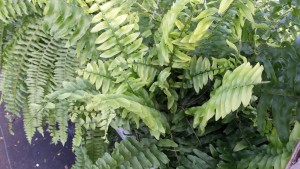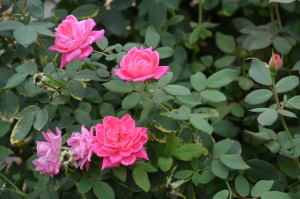Magnesium (Mg) is the central element involved in chlorophyll synthesis, a crucial nutrient in photosynthesis, and in maintaining vibrant green leaves. Like calcium, magnesium is required by plants in large enough quantities. It is a “macro-nutrient”, as important as nitrogen (N), phosphorus (P), and potassium (K), the latter three adsorbed by plants in greater amounts.
Magnesium plays a key role in chlorophyll synthesis, in fruit and nut production, and is critical for seed germination. Magnesium helps strengthen cell walls and improves plant uptake of nitrogen, phosphorus, and sulfur. Plants such as tomatoes, peppers, and roses need high levels of magnesium for optimal growth. However, plants often do not show symptoms of magnesium deficiency until it becomes severe.
Deficiency symptoms appear first in the youngest foliage. Magnesium deficiency shows up on most leaves as interveinal yellowing (chlorosis). Dolomitic limestone, frequently applied to adjust soil pH, will also supply some magnesium. Many water-soluble fertilizers like Miracle-Gro® and Schultz® Plant Food contain magnesium.
Magnesium deficiency causes yellowing of leaf edges on older leaves, compared with the interveinal yellowing present when iron is deficient. Magnesium deficiency can result in complete defoliation. In certain plants, such as geraniums, magnesium deficiency also causes the leaves to curl slightly upward.
Magnesium sulfate (i.e. Epsom salts) is an inexpensive source of water-soluble magnesium. It may also be applied as a foliar spray and is taken up quickly. It is available in drug and grocery stores and is compatible with other water-soluble fertilizers. Generally, 1 oz. per 100 gal. of Epsom salts supplies about 7.5 ppm of magnesium.
Many home gardeners are sold on applying Epsom salts to peppers, tomatoes, roses and some foliage house plants like ferns and dwarf palms. Citrus crops in sandy Florida soils and house plant citrus also respond by darker greening of leaves.



 Posted in
Posted in 
